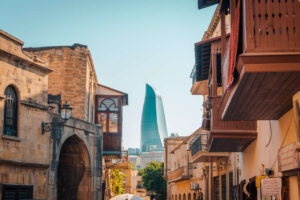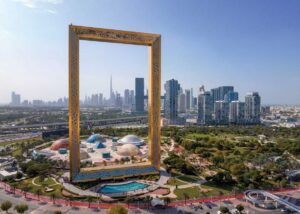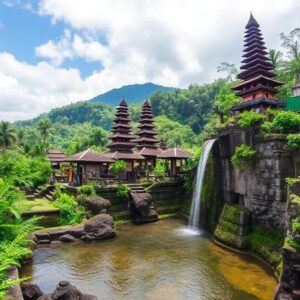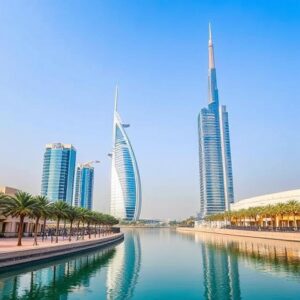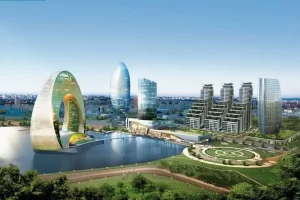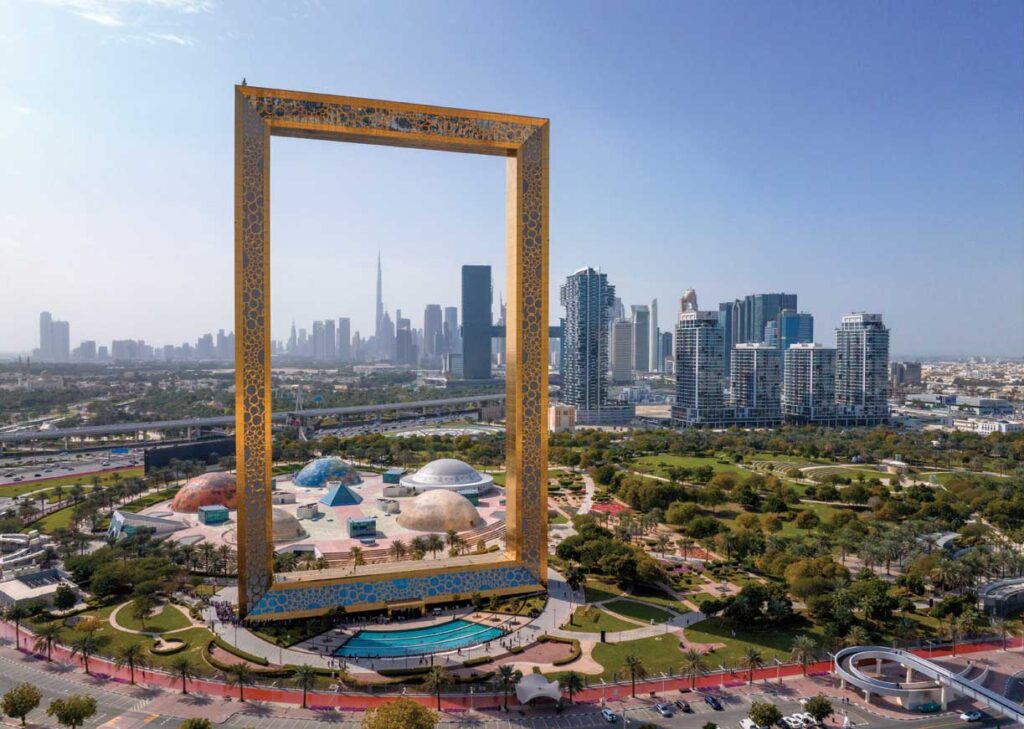
Dubai’s tourism sector has become a global benchmark, seamlessly blending innovation, luxury, and accessibility to drive unprecedented economic growth. In 2024, the emirate achieved a record-breaking $179.8 billion in international visitor spending, with 18.72 million arrivals, and 2025 is poised to push these figures even higher. This article explores how Dubai navigates its tourism boom, its economic ripple effects, and the strategic vision propelling it forward, crafted for a guest blog with a focus on actionable insights.

Tourism Triumphs in 2024: By the Numbers
Dubai’s 2024 tourism performance, as reported by the Dubai Department of Economy and Tourism (DET), set new global standards:
- 18.72M International Visitors: A 9% increase from 17.15M in 2023, surpassing pre-pandemic levels.
- $179.8B in Visitor Spending: A 50% year-on-year surge, cementing tourism’s role in Dubai’s GDP.
- Top Markets: Western Europe (22%), CIS & Eastern Europe (17%), GCC (15%), South Asia (14%), MENA (12%).
- Hotel Performance: 154,016 rooms, 78% occupancy, Dh647 Average Daily Rate, and Dh528 Revenue Per Available Room.
- Airport Traffic: Dubai International Airport (DXB) handled 92.3M passengers, up 6% from 2023.
Events like the Dubai Shopping Festival, Dubai Summer Surprises, and COP28, alongside new attractions like Real Madrid World, fueled this growth. The culinary scene, with 1,200 new restaurant licenses and an expanded MICHELIN Guide, further enhanced Dubai’s appeal. Posts on X captured the excitement, with users praising Dubai’s “world-class vision” and “unmatched hospitality.”
Economic Ripple Effects

Tourism’s success in 2024 catalyzed broad economic gains:
- Job Creation: Over 400,000 hospitality jobs in Dubai, supporting 7.75M regionally.
- GDP Contribution: The accommodation and food services sector grew 3.7% in the first nine months, adding Dh11.5B to GDP.
- Aviation Boost: Emirates Airline’s AED 22.7B ($6.2B) profit, up 18%, underscored Dubai’s role as a global hub.
- Retail Surge: Dubai Mall welcomed 100M visitors, while city-wide festivals drove retail spending.
Strategic moves, like resumed flights to Nigeria and interline agreements with Air Peace, opened new markets, amplifying economic impact. The D33 agenda, aiming to double Dubai’s economy by 2033, positions tourism as a cornerstone, with 2024’s ranking as the top destination for Greenfield FDI projects reinforcing investor confidence.
Navigating Challenges
Despite its triumphs, Dubai faces challenges in sustaining this growth:
- Overcapacity Risks: With 154,016 hotel rooms, maintaining high occupancy requires relentless demand generation.
- Geopolitical Tensions: Regional instability could impact visitor confidence, though Dubai’s neutral stance mitigates this.
- Sustainability Pressures: Balancing growth with environmental goals, like UAE’s Net Zero 2050, demands innovation. (75% of hotels hold sustainability certifications, per DET.)
- Competition: Rivals like Saudi Arabia’s NEOM and Qatar’s tourism push require Dubai to stay ahead in innovation.
Dubai attraction tours counters these with proactive measures: simplified visa policies, infrastructure like the upcoming Al Maktoum International Airport, and a focus on high-potential markets like Africa and Asia.
2025 Outlook: Building on Success
Early 2025 data signals continued momentum:
- 7.15M Visitors (Jan-Apr): A 7% increase from 2023, per DET.
- Projected Spending: Dh267.5B, or 13% of UAE’s GDP.
- Hotel Stats: 153,534 rooms, 78.7% occupancy, 3.6-night average stay.
- Key Events: Dubai Summer Surprises 2025 and new attractions like expanded theme parks.
Issam Kazim, CEO of Dubai Corporation for Tourism and Commerce Marketing, emphasized “resilience and innovation” as key drivers, while Ahmed Al Khaja, CEO of Dubai Festivals and Retail Establishment, highlighted the role of festivals in sustaining growth. Posts on X reflect optimism, with one user noting, “Dubai’s vision turns challenges into opportunities.”
Strategic Takeaways for Stakeholders

For businesses, policymakers, and investors navigating Dubai’s tourism-driven economy:
- Leverage Events: Align offerings with festivals like Dubai Shopping Festival to capture peak demand.
- Target Emerging Markets: Focus on Africa and South Asia, where visa simplifications and new flight routes are unlocking potential.
- Prioritize Sustainability: Adopt eco-friendly practices to align with Dubai’s green tourism push and attract conscious travelers.
- Invest in Innovation: Support tech-driven experiences, like AI-enhanced tourism apps, to stay competitive.
- Collaborate: Partner with DET and stakeholders to amplify marketing and infrastructure initiatives.
Conclusion
Dubai’s ability to navigate tourism and economic growth lies in its bold vision, adaptability, and relentless pursuit of excellence. From record-breaking 2024 achievements to a promising 2025, the emirate proves that strategic planning can transform challenges into opportunities. As one X user aptly said, “Dubai doesn’t just grow—it redefines what’s possible.” For stakeholders, the path forward is clear: align with DMC for Dubai momentum to thrive in a global tourism powerhouse.


